Sound the trumpets and roll out the imperial carpet: The reign of Red, White & Royal Blue is imminent.
Based off the best-selling novel by Casey McQuiston, the gay rom-com centers on Prince Henry (Nicholas Galitzine) and “First Son” of the United States Alex Claremont-Diaz (Taylor Zakhar Perez), two longtime frenemies from across the pond, who gradually come to realize they have the hots for each other—and more in common than either ever expected.
As anyone who’s read that book can tell you, if a movie adaptation was going to do it any justice, it was going to need to include lots and lots of gay sex. And, thankfully, it found a director who understood that—one who was ready to stand by it no matter what.
“There was no conversation whatsoever after the R-rating came to us about changing it,” reveals Matthew López, the Tony-winning playwright behind the The Inheritance who makes his feature directorial debut with Red, White & Royal Blue. “I couldn’t tell this story without telling that part of the story.”
Ahead of the film’s August 11 premiere on Prime Video, Queerty sat down with López to delve into the already-buzzed-about sex scenes, opening up about how he was able to capture them so authentically (hint: he’s had “a lot of experience”), why he chose to focus on what he calls “the moment of insertion,” the studio’s response to that R-rating.
The following interview has been edited and condensed for clarity.
QUEERTY: Before we get into Red, White & Royal Blue, I’m curious if there’s an LGBTQ+ film that you consider a big part of your own coming-out journey, or that your remember impacting your understanding of queerness at a younger age?
MATTHEW LÓPEZ: You know, I’m old enough to have sort of been witness to the journey that queer cinema, in particular, has taken since since the ’80s. I started really consuming them in the mid-’90s when I was a teenager, so I saw everything, practically in real time—I just had to do a little bit of catching up.
But I think the movie that really reset my brain was My Own Private Idaho. It’s a film that I routinely force young, queer friends of mine to watch—like, “You’re not going anywhere until you see this movie!” I’ve become that guy. And I love that movie so much because it’s one of the first—even though it’s based on Shakespeare and doesn’t away from tragedy, obviously—but it isn’t tragic. And, in Gus Van Sant’s own way, it’s actually very romantic, and very beautiful.
It was the first time I saw a movie with two men in love, who… were just in love! And it was an odd kind of love, but they cared so deeply about each other. There was a tenderness to that movie that I had never seen before between two men on screen. So that really reset my DNA, and it I don’t think I’ve ever really recovered from seeing that movie.
I think it was the power Gus Van Sant—it’s a glorious film. I look back at it now, and it just it’s one of the things that makes me very proud to be a gay man. And very grateful that I am now filmmaker!
Related:
Some people have just discovered Keanu Reeves starred in a homoerotic thriller
Queer director Bruce LaBruce shares photos of a very twinky Keanu Reeves and co-star from 1984
Well, to get into your “filmmaker era”: We’ve been fans of your theater work for years, but we’re thrilled you’re making your feature directorial debut with Red, White & Royal Blue. Of course, it’s based off a very popular book, but what is it about this story that feels so inherently cinematic to you?
Cinematically, it was the setting. You know, basically: Take your favorite bits of The Crown, take your favorite bits of The West Wing, and put them all into one movie, It was just heaven—visual heaven.
But more personally, and I think more granularly, it was really Alex and Henry as people, as characters, their story. I heard someone say about the movie that it was about “two people trapped in gilded cages,” and I really responded to that description. On the one hand, you could take the approach that, well, “Henry, he’s a rich kid, and Alex may come from working class background, but he’s seen a son of the President, so he’s got lots of access now.” But it really is about two people who are trapped in a world that assumes that they know them. And I think there’s something really beautiful about two people who are trapped by the world’s assumptions of them, and who’s very fame and access precludes them from actually being honest with themselves about who they are.
I think that’s what causes people to really relate to the characters, and to really care about them and root for them. Casey [McQuiston] does a really great job of—well, it can easily become, you know, Triangle Of Sadness, but instead it really becomes something very tender and very relatable. It’s funny; it’s a movie about people whose lives are so elevated and different from ours, and yet they’re two very relatable characters
Naturally, then, I have to ask: Do you identify more as an Alex or a Henry?
Oh, I’m an Alex! That’s not even a question. We had screening last night and my aunt saw it, and she was like, “Alex is you but in a better body!” [Laughs.] Like, “Thank you for that!” But, yeah, I am definitely an Alex. Though Team Alex and Henry—I mean, you shouldn’t have to choose.
Related:
Patriotic passion: Why ‘Red, White & Royal Blue’ is a must-see LGBTQ+ movie
Here’s everything to know about ‘Red, White & Royal Blue’ before its release later this summer.
Something the film is already being celebrated for—and perhaps what’s garnered its R-rating—is the fact that it doesn’t hold back when it comes to the sex scenes between Alex and Henry. What can you tell us about your approach to those scenes? Why did they feel crucial for you to include them?
Well, anybody who has read the book knows that they’re really horny for each other, you know? Part of the charm of the novel is how they really can’t stop having sex, and it’s fun! I couldn’t tell this story without telling that part of the story. When I was pitching myself as the director—you know, buyer beware—I said, this will be in the movie, if I direct it, just so you know. So they knew what they were getting.
I think that this particular movie and this particular pairing and this particular scene is interesting to me because it wasn’t anything I can remember seeing before. Which is [to say,] I definitely wanted to make sure that we never lost sight of Alex and Henry in that scene, and that it didn’t become about bodies, it didn’t become about choreography.
There’s nothing that I could show you that you can’t see on PornHub or OnlyFans. There’s nothing in this movie I could show you that you can’t see yourself. What you can’t see anywhere else are two brilliant actors—so perfectly cast—creating a scene of intimacy that absolutely tells you every single thing you need to know about where those characters are emotionally.
And what was really important to me—and to Robbie Taylor Hunt, my intimacy coordinator—is that we also needed to make sure that anybody watching this movie who has experience… Look, I’m a gay man, Robbie Taylor Hunt is a gay man. These scenes were created by people who know what they are doing. And I don’t know why I was trying to get euphemistic; the scenes were built by two creatives who have a lot of experience doing this! And we know how two men have sex because we both, individually, have been doing it for quite a number of years.
So I didn’t want it to be phony, and I didn’t want an audience to who knew what was going on to suddenly go, “Well, that couldn’t happen. That’s the wrong angle!” You know? It just had to be physically accurate. And it had to feel very authentic.
And so then it did become about choreography. Then it was, “Okay, this is how I’m gonna frame this.” I needed to not stray too far away from their faces because, ultimately, I was really interested in the emotional journey that they were taking. But then it was just about having a lot of rehearsals and a lot of conversations with the actors. I was like, “Look, I’m not going to ask you to—we’re not going to overshoot this thing, we’re not going keep you here all day doing various different things. We’re just going to go for the moment”
So, Robbie and I decided that the moment we were going to investigate was the “moment of insertion,” the moment when Alex goes into Henry. And we were going to focus like a laser beam on that moment.
And, you know, I can’t say that I got a tremendous amount of resistance from the studio about it. They knew what they were getting from me. And I got no more or no less notes from them about that scene than I got about the cake scene, or the election night scene.
But I also knew that this scene would be talked about—in the way we shot it—and what we all sort of suspected is that it would probably get us an R-rating. And it did! And that rating came with notes from the MPAA on what we could do in order to get a PG-13 rating, and it was basically, “eviscerate that scene.” And we were all—all of us: me, producers, studio—we just said, “No thank you.” And that’s it, there was no conversation whatsoever after the R-rating came to us about changing it. It was just—there was not even a single email about it. It was accepted, and we moved on.
Red, White & Royal Blue begins streaming on August 11, exclusively via Prime Video.
Related:
Meet the entertainment creators fighting the good fight this year
These six artists have kept us entertained, offered new levels of visibility, and made us very proud.






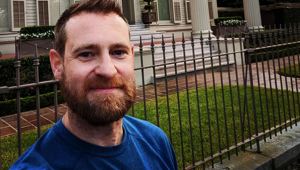
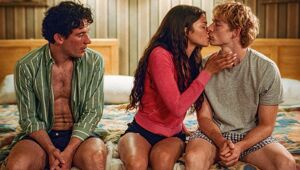
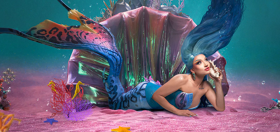


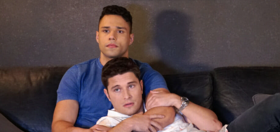









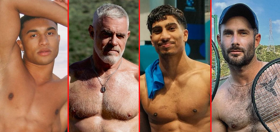
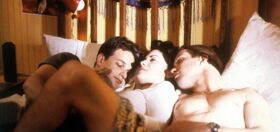
Diplomat
It’s 12:30pac time. I think it’s going to drop at 8pm east coast 5pm here. Fingers crossed.
jlreyactor
Simply cannot wait to see this one. Mr. Lopez, is very bright, very intentional, very clear. Again, cannot wait!
ZzBomb
I’m stupid excited for this movie! The book was a pure delight that had me devouring pages.
Also, if you haven’t seen “Handsome Fellow,” another movie Nicholas Galitzine starred in, watch it. This actor is one to watch moving forward.
Diplomat
It’s called Handsom Devil.
Diplomat
Not to be missed. Excellent!
mz.sam
It’s Friday Midnight and screening begins…YIPPEEEE!!!!!!!!
pete54
Saw it here Australia this morning (about 9 hours ago). Loved it. Husband has almost finished a second viewing!
1898
the MPAA would not have given this movie an “R” rating if the characters had been straight rather than gay. the sex scene was extremely mild. i’ve seen steamier / raunchier sex scenes on daytime soap operas that air at 9am on broadcast television. the only logical conclusion is that the MPAA has a totally different set of rules / standards for movies featuring same-sex love interests, which is unsurprising but still disappointing
stuffedpuppy
Agreed, the MPAA is truly a homophobic organization. I remember a time (around 2010) when not a single parent sat on the board of that fraudulent censorship board created for…children. Disgusting.
dmd911
My husband and I watched it tonight. Excellent movie!!!
Rank Amateur
I saw it this evening and it is excellent, very tastefully done. And, yes, Nicholas is also very good in “Handsome Devil” which is another well done gay movie.
stuffedpuppy
I watched this film two days ago and have to admit that it is a very lovely love story (romcom). Starring two stunningly beautiful actors Nick Galizine (breathtaking in Handsome Devil**) and Taylor Zakhar Perez (WOW). What a feel good summer movie, seriously that, finally, happens outside the realms of heterosexuality -thank goodness!
The target audience SHOULD be old(er) teenagers as NO ONE will see a single scene of nudity.
@1898 Brings an age old point: How long do we have to tolerate the MPAA’s antiquated rating system and let people watch what they want. Enough double standard-truly appalling!
“moment of insertion” my a** what a load of crap!
teal
Again, the “moment of insertion” was beautifully done by all concerned. It expressed perfectly that sex with someone you are head over heels in love with is a cosmic, sacred moment. That’s it.